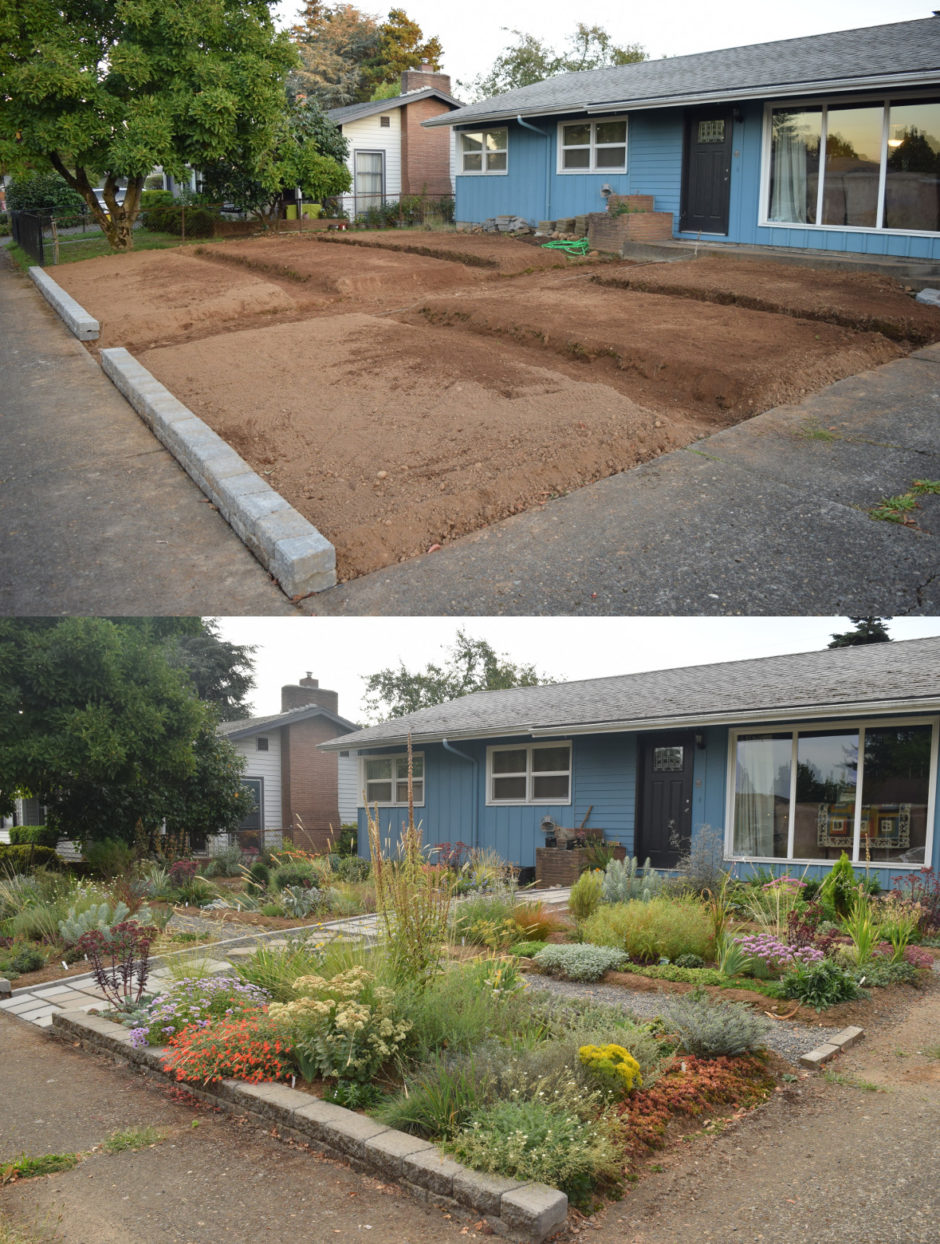
The front garden has come a long way in just two years! I’ve had a blast trying out new plants and seeing what works in my sunny, summer-dry, winter-wet conditions (Portland, Oregon). Here are ten of my favorite, fun, slightly out-of-the-ordinary plants so far.
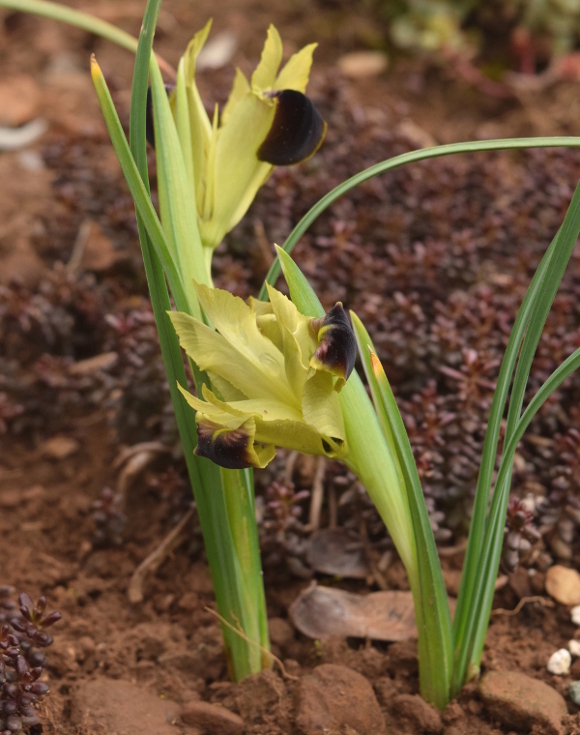
Iris tuberosa. Formerly known as Hermodactylus tuberosus, this petite, quirky iris is commonly known as snake’s head iris or widow iris because of its goth coloring. It’s an unusual shade of chartreuse (which celebrated sixteenth-/seventeenth-century herbalist John Gerard called “goose-turd green”) with near-black accents. The flowers are supposed to have a nice fragrance, but I forgot to sniff mine. Here it is blooming on April 4, though once it gets settled in (I just got it this year), I suspect it will bloom earlier. In the summer, the whole thing disappears.
Iris tuberosa is a Mediterranean plant. It loves full sun and gritty soil and dry summers. It’s hardy to zone 6. I’ve planted mine in a patch of dark-leaved Sedum album ‘Black Pearl’, which I think was genius.
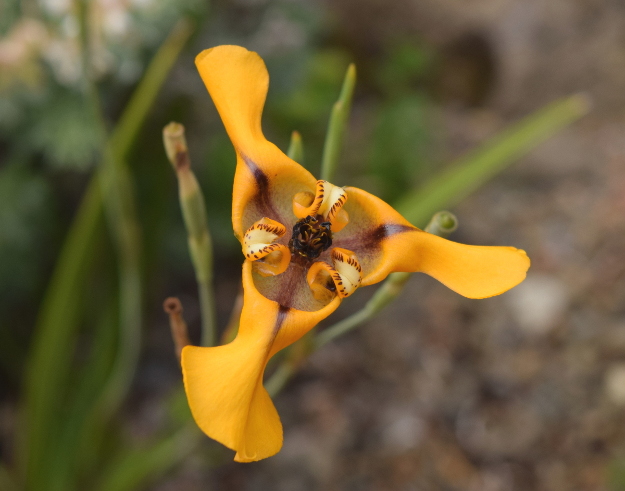
Cypella herbertii. Here’s another iris relative that I adore. The intricate triangular flowers, egg-yolk yellow with cream and dark purple accents, have a lot of personality. They bloom in summer.
Cypella herbertii is a sleek, slim plant growing to about 20 inches tall. Individual blooms only last one day, but they open in succession along the stems. It’s easy from seed and may bloom the first year. Prefers a sunny, well-drained, uncrowded spot. Hailing from Argentina and Uruguay, it’s hardy to zone 7b. In colder places or where soils are heavy, you can grow it in a pot.
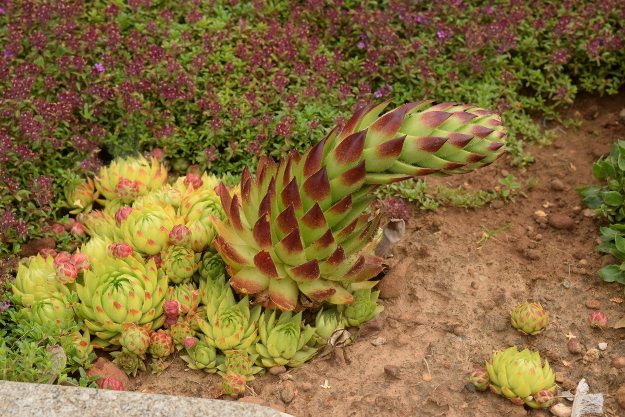
Jovibarba sobolifera. Now correctly known as Sempervivum globiferum, this funny hens-and-chicks is of the type called “rollers,” because the offsets form little balls, barely attached to the mother plants by the finest threads, which detach and roll away to make new rosettes elsewhere. The leaves are a bright, spring-like yellow-green with hot pink tips. It looks good all the time.
Jovibarba sobolifera is a monocarpic plant, which means that once a rosette gets big enough, it flowers and then dies. This happens in summer and is rather obscene, as you can see. Eventually, it makes an interesting treelike stalk with cream-colored flowers. Give it full sun and excellent drainage. Jovibarba sobolifera is from southeastern Europe and is hardy to at least zone 4.

Bigelowia nuttallii. If you’ve never heard of Nuttall’s rayless goldenrod, you’re not alone. I found this at Joy Creek Nursery last year and decided to give it a try, and I’m glad I did. It blooms in August, and yeah, there are tons of yellow-flowering plants for summer, but this one is special. It’s a bright, delightful shade of yellow, and it catches the light in a dreamy way. The plant is only 12 to 15 inches tall and the foliage is pretty. Fine, grassy green leaves make a tidy clump.
I thought that Bigelowia nuttallii might be a Pacific Northwest native because of our native Cornus nuttallii, but it turns out that Mr. Nuttall botanized all over the country. This plant is from the Southeast. It’s found in scattered spots from Texas to Florida, but is hardy to at least zone 5a. Full sun, good drainage; it’s very drought tolerant. Pollinators love it.

Panicum virgatum ‘Hot Rod’. Switchgrasses are some of the best ornamental grasses you can buy, and this one, I think, is the most dramatic. It was selected for its habit of turning red before other varieties. I have some of these in my back garden, and they are a rainbow of colors. This specimen in the front garden is in a hotter, drier spot, and it turns completely red in summer.
Switchgrasses are native to most of the central and eastern U.S. and are widely adaptable. They are tough as nails. ‘Hot Rod’ is hardy to zone 4. Grow it in full sun for best color, in any kind of soil. It gets about four feet tall.
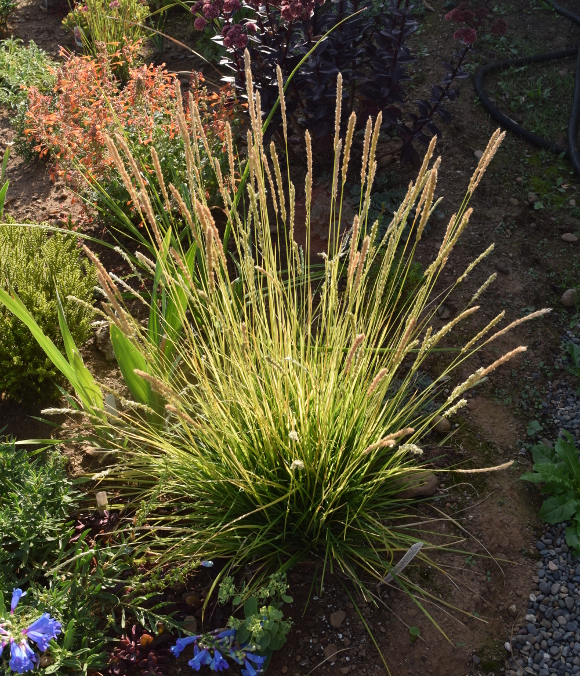
Sesleria autumnalis ‘Campo Verde’. This is a neat, compact, and underused ornamental grass. I have ‘Campo Verde’ autumn moor grass near my front door and it’s a good front-door plant. It always looks nice. The leaves are a cheery light green and the whitish plumes (maxing out at 26 inches in my garden) are long-lasting and pretty in the sunlight. It would be beautiful en masse.
Give ‘Campo Verde’ full sun to part shade and good drainage. It’s hardy to at least zone 6. Autumn moor grass hails from northern Italy and Albania. I’m told it doesn’t care for extreme heat and humidity.
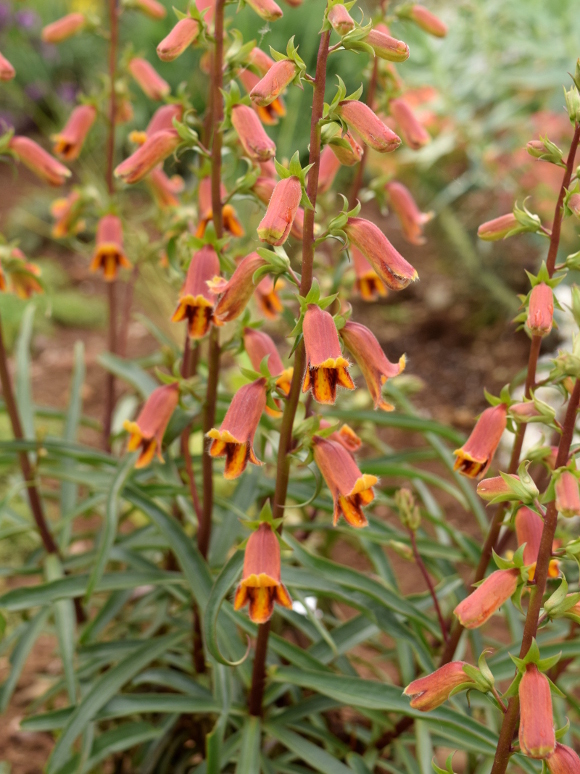
Digitalis obscura. Sunset foxglove comes from Spain and North Africa and is one of those foxgloves that relishes a dry, sunny, rocky site. It’s nothing like old Digitalis purpurea. It gets about 18 inches tall, is evergreen, and has the most fascinating rose, gold, and mahogany-brown flowers. Blooms appear in earnest in late May and sporadically during the rest of the growing season.
Sunset foxglove is short-lived, persisting only three to five years. Sometimes it won’t even make it that long. I started out with two plants two years ago, and one is toast already. Fortunately, it’s easy from seed (and will reseed if you let it), so now I have several babies, and I plan to keep this charmer going in my garden indefinitely. It’s hardy to zone 6a or 4b, depending on whom you ask.
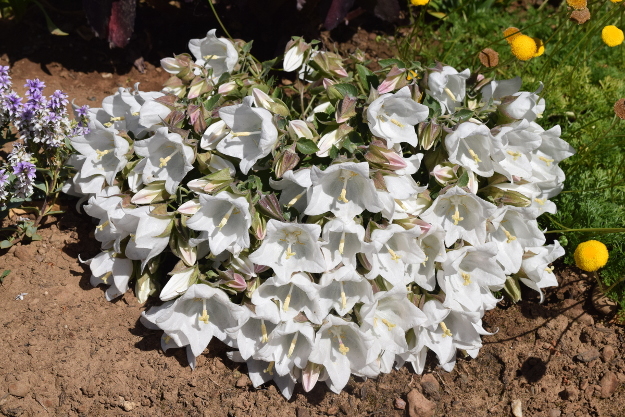
Campanula choruhensis. I never know what I’m going to come home with when I go to a meeting of my local North American Rock Garden Society group (the Columbia-Willamette Chapter), but it’s usually something cool. Case in point: Campanula choruhensis, from Turkey. In June, this charismatic cutie is smothered in over-sized, frosty white blooms that spring from big, ribbed buds.
I planted my little specimen where I thought it would get some shade, but in actuality the sun swings around and blasts it in the afternoon. It seems perfectly happy there. Slugs are said to ravage it, but they’ve never touched mine. I planted this between two other fun plants: Hebe ‘Wingletye’ and Cotula ‘Tiffendell Gold’.
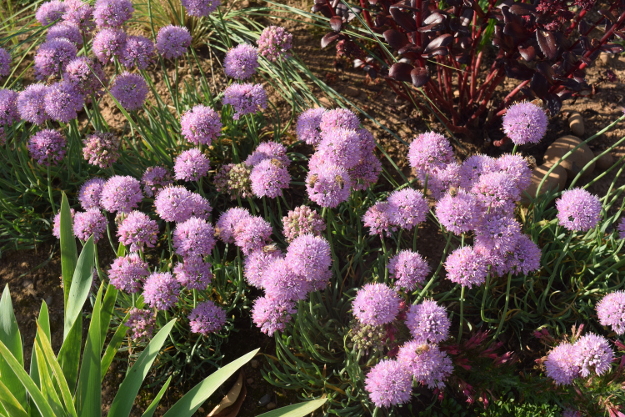
Allium senescens subsp. glaucum. I didn’t grow this plant for the summer flowers, but they’re adorable! And the bees love them. No, I originally grew German garlic for swirly blue foliage. Each plant looks like a tiny whirlpool.
German garlic reaches only one foot tall with the blooms. It likes full sun and good drainage. Native to Europe and northern Asia and hardy to zone 4.
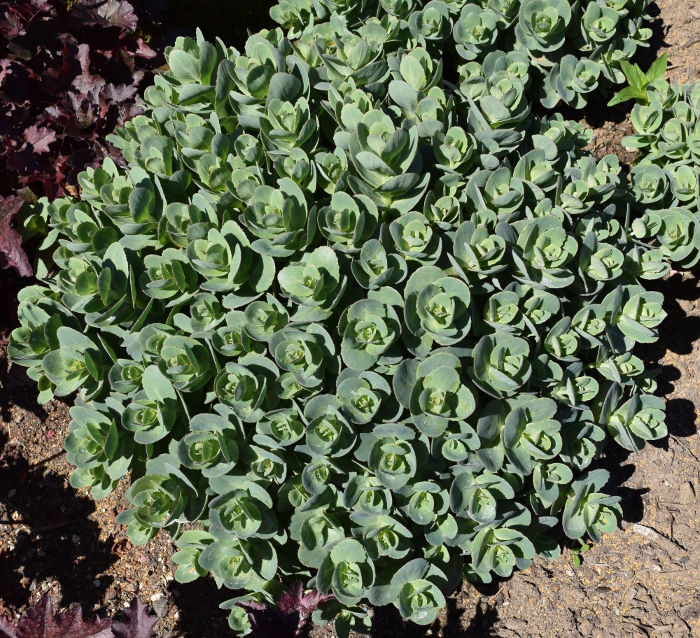
Sedum ‘Rosetta’. Sedum is my favorite genus, and I would be remiss if I didn’t include at least one on this list. I’ve chosen ‘Rosetta’. It’s a textural treat when the blue-green leaves come up in spring, like—well, like little roses!
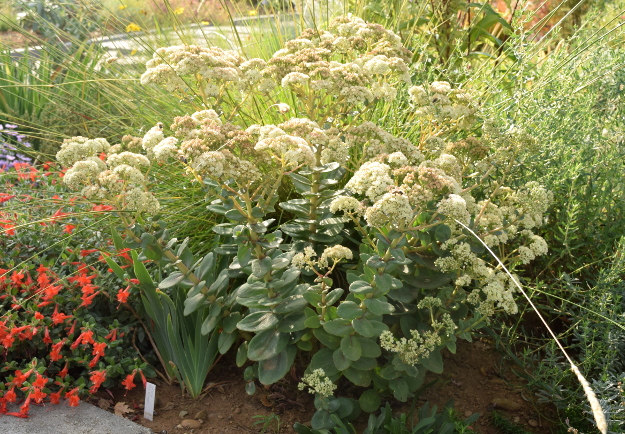
‘Rosetta’ expands over the course of the season to make a vase-shaped clump about two feet tall and two feet wide. It’s a chunky, sturdy plant, but elegant, too. It opens creamy white flowers in late August. White sedum flowers don’t age as gracefully as the pink ones, but they are lovely while they last and are a favorite of pollinators. ‘Rosetta’ is a product of Terra Nova Nurseries of Oregon. It’s hardy to zone 4 and is easy to grow in any sunny site with average soil.
***
Do you grow any of these fun plants? How have they done for you?

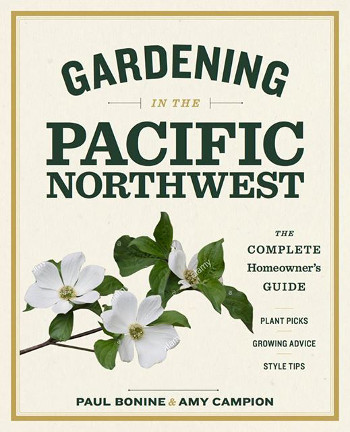























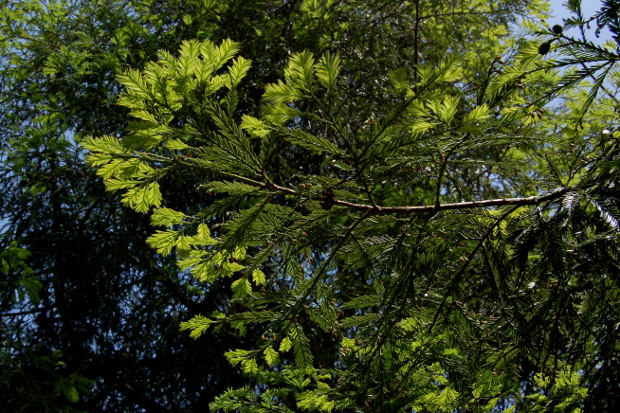


I’ve bought, and planted, Iris tuberosa twice, both times it just disappeared. Of course the plants were pretty weak little things when I planted them. Where did you get yours?
Xera had some early this year and I snagged one. Hoping it likes my garden!
Thank you for your blog Amy. Interesting and fun to see the variety of plants – really love Digitalis obscura, wow! And the “before” photo of your front yard.
Thanks, Stephen! I really did start from nothing, didn’t I?
I really need to embrace summer-dormant bulbs like that little iris, so thanks for highlighting this little beauty. I did pick up that cypella from Xera during a quick visit in early summer and am smitten with it and want to try some of the blue ones. The seslerias are so good here in coastal zone 10 in Los Angeles. Particular fav is ‘Campo Azul.’ I think that digitalis might have lasted all of six months for me, but you’re right, it’s so good that making an extra effort is worth it. Thanks so much for some great recommendations.
I grew a bunch of the blue cypellas from seed last year but only one overwintered. The rest rotted. But I will try again. Maybe they weren’t big enough. Thank you for commenting.
I have enjoyed your posts. 🙂
Hello Amy, I really enjoyed reading your article about the plants you are growing, I found it very helpful. Thank you, Richard
Maybe not the funniest but the most strange is black radish 😀 I was growing it last year for the first time and my friends didn’t know what it is when I gave it for them to eat. Next to black radish, which looks like this: https://gardenseedsmarket.com/rzodkiew-runder-schwarzer-winter-czarna-okragla-en.html I’m growing white cucumbers. It looks amazing and quite exotic 😀
Nice to see all things that you have sown. The funnniest was digitalis accura. We can grow this plant by digitally also,
“I thought that Bigelowia nuttallii might be a Pacific Northwest native because of our native Cornus nuttallii, but it turns out that Mr. Nuttall botanized all over the country.”
Thank you for this information!